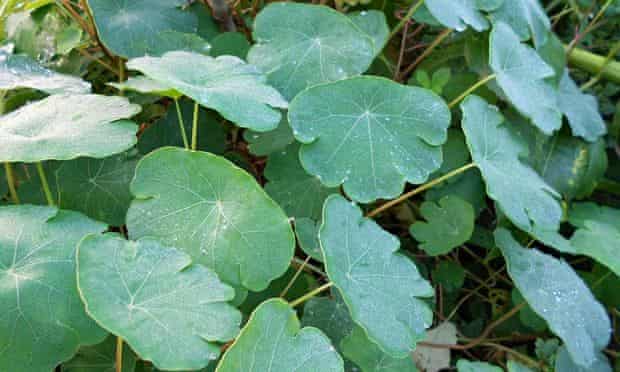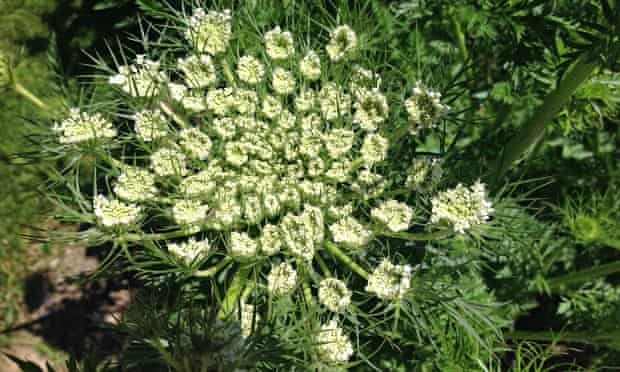How To Blend Flower And Vegetable Garden
We habitually grow flowers and vegetables in different beds. As a result, in a small garden, there may seem little point trying to fit in a vegetable patch. You may worry that it means less room for flowers, or that it might make the garden less attractive.
In fact, as long as each plant's individual requirements are met it can be planted in any context. So why not mix flowers and vegetables together?
Decorative vegetables
Many vegetables are beautiful in their own right and can add even more to an established flower bed. Peas and beans, the classics of the summer vegetable patch, can easily scramble up a wigwam or obelisk in the border or up a fence or wall. Varieties with particularly attractive flowers include runner beans 'Painted Lady', broad beans 'Crimson Flowered' and purple flowered mangetout peas 'Carouby de Mausanne'. There is still just about time to sow any of these and given fair weather into the autumn there should be a crop to be had. Ideally you would raise them in pots or cells first and then transplant into fertile soil.
Other vegetables deserve a place in the flower bed on account of their architectural shapes or attractive foliage. Cardoons – smaller relations of globe artichokes – make a good focal point. The leaves can be blanched and eaten and are particularly popular in Italy. Asparagus grows delicate ferny foliage after the early spears have been harvested. Herbs can likewise be grown with flowers; green and bronze fennel with their airy fronds and yellow flowers are gorgeous for months at a time. The foliage of asparagus and fennel also makes a delightful addition to cut flowers.
My particular interest is perennial vegetables, some of which are very attractive plants, for example ground nut (apios americana) and mashua (tropaeolum tuberosum). Ground nut actually belongs to the pea family and is nothing to do with peanuts; it produces strings of edible tubers in the autumn. Its flowers are dusky pink-cum-brown, but not guaranteed in the British climate. However it has attractive foliage, reminiscent of wisteria.

Mashua, in the nasturtium family, has the characteristic leaf shape but somewhat scalloped around the edges. A cultivar 'Ken Aslett' is available in garden centres. Mashua's flowers are orange trumpets but again they are not guaranteed, mine have never flowered yet. Mashua is a feisty plant that will scramble all over a supporting structure or, failing that, over the any adjacent plants. It produces edible shell-shaped tubers.
... and petals in the patch
When I moved from experimenting with perennial vegetables to growing them in polycultures my own garden became much, much more floral and attractive. Using plants such as marjoram, thyme, phacelia, calendula and comfrey to attract insects and improve health and fertility brings the bonus of flowers for months at a time and the satisfied hum of happy insects through the long summer days.
Then there are the vegetables that can also flower, but which are usually harvested well before they reach that stage. One of my favourites is the humble carrot. I grow them amongst flowers, fruit bushes, herbs and other vegetables but would happily add them to an ornamental flower bed. Mine is 'Lisse de Meaux', an open pollinated (by insects, not artificially) variety and I just cast the seeds onto the ground without any preparation. This is not in accordance with conventional advice and practice and it may take longer for them to germinate this way; however they grow well even on stony clay.
In the first year there is delicately cut foliage to look at whilst the roots develop. I wait until late autumn or even winter to harvest by which time the carrot fly have ceased their marauding life cycle and leave for the following year(s). My current second year carrots have now shot up to over a metre tall, some are 1.4 m and almost form a hedge! Each plant has one main head plus several on side shoots; the flower heads are large, intricate and complex, with white flowers visited all summer by innumerable grateful insects. By autumn the exquisitely shaped seed heads dance in the breeze and I can save the seed to grow again. (Hybrid seeds cannot be saved, but open pollinated ones can.)

Radish is another very ordinary vegetable with an unexpected bonus. Initially neither particularly interesting nor attractive; they are easily hidden amongst taller flowers. Leave some in place and next spring they will bear masses of light mauve flowers waving in the breeze. The pods which follow are edible, best steamed or stir fried.
Possibilities abound; vegetables in the flower bed, flowers in the vegetable patch, or a pre-planned mixture of both. You can have a spirited mixture that is both beautiful and functional in any setting. If the natural world makes no distinction between flowers and vegetables why should we? If ever there was a time to be done with age old conventions and to try new things it is now.
Anni Kelsey is the author of Edible Perennial Gardening and blogs about her gardening exploits at annisveggies.wordpress.com.
Interested in finding out more about how you can live better ? Take a look at this month's Live Better Challenge here .
The Live Better Challenge is funded by Unilever; its focus is sustainable living. All content is editorially independent except for pieces labelled advertisement feature. Find out more here .
How To Blend Flower And Vegetable Garden
Source: https://www.theguardian.com/lifeandstyle/2014/jul/11/flowering-relationship-grow-your-blooms-and-veg-together
Posted by: allenmignobt.blogspot.com

0 Response to "How To Blend Flower And Vegetable Garden"
Post a Comment